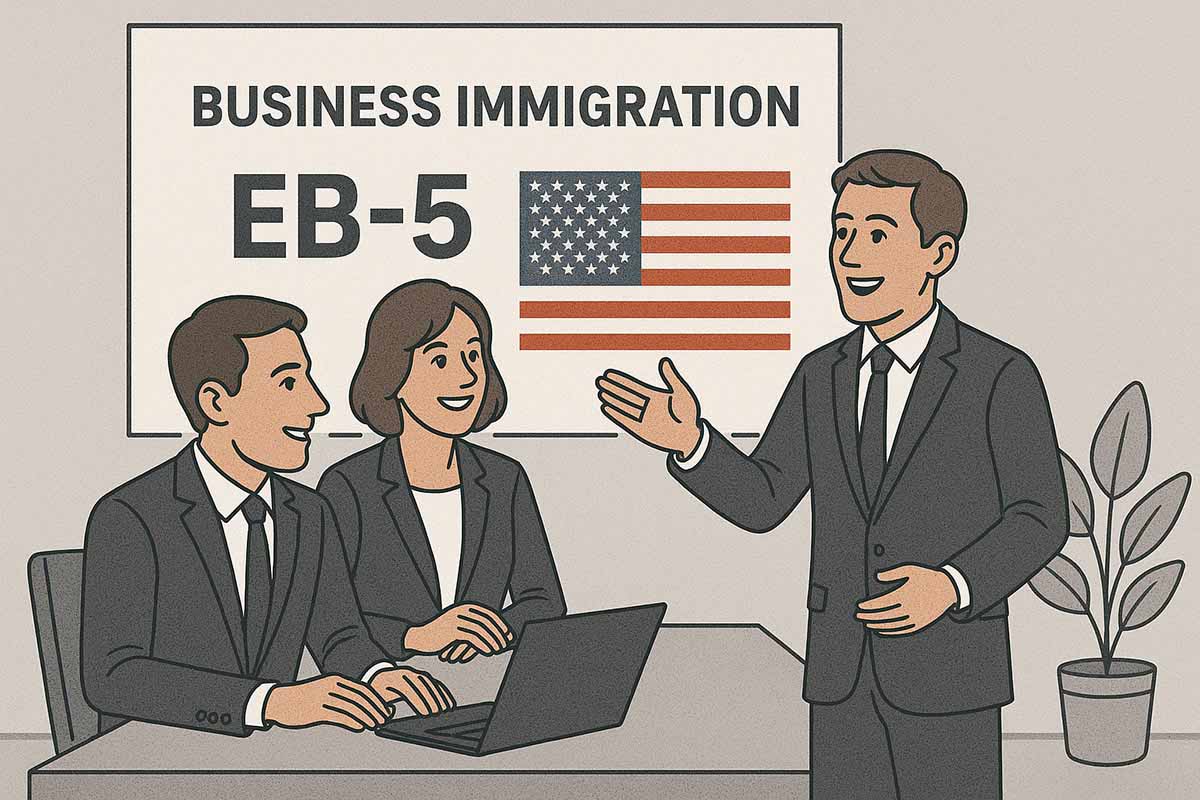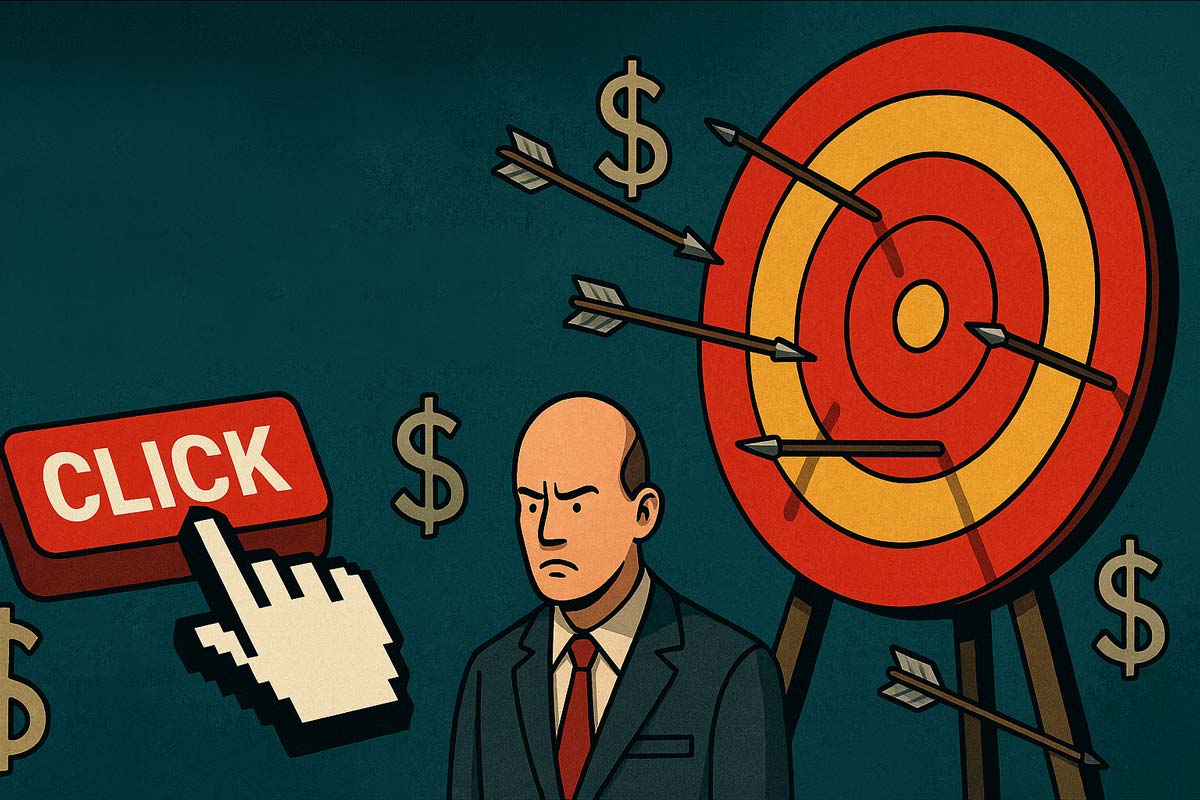Before you assume this is just another article from yet another self-proclaimed expert eager to muse on the great American EB-5 program, let me be clear: I’m not a theorist. And I’m definitely not a blogger trying to recycle someone else’s social posts.
I’ve been professionally involved with EB-5 for thirteen years. Over that time, my clients have invested tens of millions of dollars into U.S. projects through this very program. I haven’t just observed how the system works, I’ve worked inside it. For more than four years, I served as Vice President of EB-5 at one of the largest investment firms in New York City. And believe me, I know exactly what hides behind the shiny brochures and pitch decks stamped “USCIS Approved.”
I’ve seen successful projects and outright frauds. I know where you’ll get your money back and where they’ll forget your name the moment your wire hits the account. I’ve personally guided dozens of investors through the entire journey from doubt to green card, and from hope to full capital return. And I also know why thousands of others ended up with nothing.
So no, this is not a promotional piece. And it’s not a takedown either. This is a survival manual for a minefield, written by someone who’s walked it, mapped it, and led dozens of families from around the world across it more than once.
If you’re seriously considering EB-5, you need to read this to the end. It might just save you $800,000, minimum five years of your life, and your faith in the American immigration system.
NO EXIT ON ENTRY
When you first hear about the EB-5 program, you squint a little as if someone just pitched you the American dream, rebranded. A green card? Legally? Through investment? Sounds like someone finally figured out how to merge common sense with bureaucracy. And you almost believe it. Until you read the fine print. And then between the lines.
At first glance, the program sounds brilliant: the U.S. government lets a foreigner invest into the American economy and, in return, offers permanent residency. You invest and you get status. Seems like a fair deal. But as with all “fair” deals, the devil lives in the details. Or more precisely, in the Regional Centers, the business plans, the timelines and the people who are very good at building not just structures, but elegant financial illusions.
The EB-5 program was born in 1990 as an altruistic attempt to funnel investments into high-unemployment areas. America needed capital. Dollars from China, Russia, India and in fact, from anywhere a businessperson was willing to pay for a ticket to stability. On paper, it all looked noble: the investor puts in $1 million (later $500,000, now $800,000 in targeted areas), creates 10 jobs, and after a few years gets a “conditional” green card. Then, after two more, a permanent one. And eventually their money back.
It sounds fair. Almost touching. As if someone decided to put capital at the service of immigration. But over the past 30 years, the program has morphed into a labyrinth of American bureaucracy, where each turn can lead to a dead end and the map has been deliberately blurred to a “figure it out yourself” level.
REGIONAL CENTERS: GREEN CARD FACTORIES OR ILLUSION WAREHOUSES?
Sometime in the mid-90s, the U.S. government realized it was too burdensome to ask foreign investors to find a project, hire workers, and manage a development themselves. So it made a “great decision”: allow investments through entities known as Regional Centers. These were quasi-commercial, quasi-transparent structures that promised to handle the “dirty work.” On paper, they were the perfect bridge between the investor and the economy. In reality, they became the launchpad for some of the most elegant schemes of the last few decades.
Regional Centers started offering ready-made projects from hotels and logistics hubs to skyscrapers and retail malls. Everything looked polished. Presentations, drone videos, charts that seemed straight out of McKinsey. Sign here, and in five years you’ll be sipping coffee in Miami with a green card in your wallet.
But behind the scenes, it worked differently. Many of these projects existed only in the minds of people who could sell thin air. The money was poured into non-recourse “loans,” the job creation was built around “indirect economic impact” but not real hiring. The investor, upon wiring the funds, did not become a shareholder, a partner, or even a creditor with repayment rights. They became… a donor. A donor of dreams. Sometimes their own but more often, someone else’s.
THE TYPICAL INVESTOR: A DREAMER WITH CASH
The average EB-5 client is not some penniless refugee clinging to hope. Quite the opposite, they’re usually well-off, educated, and done playing the game at home. In Russia, it’s a mid-level entrepreneur tired of audits, threats, and the nightly news. In China – the heir to a factory. In India – an IT specialist who’s seen enough of Dubai. Different countries, different backgrounds, one common dream: a passport. The rule of law. And the ability to leave fast when the next political or economic surprise hits.
But they all share one fatal flaw: they don’t know where they’re going. They think EB-5 is just an overpriced permanent residency package. What they don’t realize is that it’s a fully-fledged investment program, with all that entails: risk, timelines, legal ambiguity, and total personal exposure.
THE FIRST CRACKS
Until 2015, the program hummed along relatively smoothly. Everyone played their part. The investor trusted in America. The Regional Center played the reliable developer. The government acted as the benevolent referee. But then came the lawsuits. The scandals. The headlines with real names and real millions vanished somewhere between a foundation pit and a PowerPoint deck.
Jay Peak – a Vermont ski resort project that pulled in over $350 million from hundreds of investors. The money disappeared. The FBI got involved. Investors were left with no green cards and no refunds.
California Investment Immigration Fund – another classic, where funds were siphoned off for personal luxuries, including homes and sports cars.
The system began to buckle. Denials started appearing. Delays stretched into years. USCIS, now under pressure, began scrutinizing projects more closely but quickly got buried in its own paperwork. Processing times ballooned. Hope started to shrink.
THEY HAD NO IDEA WHAT THEY WERE GETTING INTO
By that point, I had already spoken with dozens of investors who are people who came to me with wide eyes and a single question: “Is there anything we can do?”
Often, it was already too late. The money was gone. The immigration status was in limbo. The family stuck somewhere between expectations and administrative purgatory. Best case scenario: a refund minimum seven years down the line. Worst case? Nothing. At all.
EB-5 turned into a minefield, where every step could be your last. On the surface, it all looked legal. But in reality it was a trap for the uninformed. Without a guide, without understanding, without someone who knows the architecture of the system, an investor was a sitting duck. A victim of the program. Of the bureaucracy. Of their illusions. Or, frankly, of their own greed and naivety.
PAPER HEAVEN, CONCRETE HELL
There’s an old saying in America: you can legitimize any scheme as long as you draw it in PowerPoint and call it a “commercial proposal.” The EB-5 program didn’t just follow that rule, it became its purest expression. Over time, EB-5 evolved into something between an investment quest, a bureaucratic roulette, and a reality show titled “Trust Us and Pay.” Welcome to the paper paradise, where concrete exists only in renderings.
THE ILLUSION OF GUARANTEES – THE TRUE FUEL OF THE INDUSTRY
Regional Centers quickly realized one thing: projects with risk are hard to sell. Dreams, on the other hand, sell themselves, especially when seasoned with legal jargon. Terms like “USCIS-approved project” began floating around, even though in many cases, USCIS had merely registered the center, not the project itself. “Guaranteed returns” were promised, even though the law explicitly prohibits guaranteed repayment of EB-5 investments. Endorsements from local governments? Most city officials hadn’t even heard of the project.
What was sold wasn’t investment, it was a feeling: safety, reliability, prestige. Investors were shown glamorous projects designed by award-winning architects, “official” partnerships with municipalities, and “bank guarantees.” The presentations were done by graphic designers. The contracts by high-end attorneys. And the investor’s questions? Handled by brokers trained to avoid specifics. The golden rule? Don’t overload the prospect with inconvenient truths.
Family offices, migration agents, marketing agencies – everyone lined up to take a cut. Investing in EB-5 became as easy as buying a coffee franchise. But unlike a cappuccino, the return on capital came, if at all, after a winding 5–7 year journey full of legal hoops, missed deadlines, and unkept promises.
PAPER WILL TOLERATE ANYTHING
At some point, EB-5 became a game won by those who could draw the prettiest pictures. Not literal pictures but business plans. Every investment project turned into a monumental document, 400 to 600 pages thick, where economic models, job creation forecasts, legal constructs and financial projections intertwined in a symphony titled “Everything’s Under Control.” On paper.
But that’s exactly where the real magic lived, in those documents. Jobs weren’t counted as physical, actual hires, but rather as “indirect jobs resulting from economic impact.” Meaning, if you built a hotel and according to the model, it was supposed to attract tourists, and those tourists then spent money at restaurants nearby, the restaurant jobs counted too. Convenient? Insane? Both. But perfectly legal.
THE CHINESE BUBBLE
China became the program’s primary engine in the early 2010s. Thousands of investors poured hundreds of millions of dollars into EB-5 projects across the U.S. Regional Centers flourished, developers stuffed their pockets, marketers opened offices in Shanghai and Shenzhen. One center alone raised nearly $1.5 billion, exclusively from Chinese investors.
But the Chinese are pragmatic. When wait times for green cards stretched to 10–15 years due to country-based visa caps, they began to pull out. First slowly. Then like an avalanche. Demand collapsed. Regional Centers were left holding unfinished projects and tens of millions in stranded capital with no new investors on the horizon.
A LESSON FOR RUSSIANS, INDIANS, AND EVERYONE ELSE
After China pulled back, the torch was passed to the next wave: Russia, India, Brazil, South Africa. Markets that used to be second-tier suddenly became front and center. They were told that now was their time. That everything had gotten simpler. No more waiting lines. The program was reformed.
And while, yes, some things technically did change, the core remained untouched:
An investor who doesn’t understand the system is fuel for the machine.
THE ADMINISTRATIVE DEAD END
Now here’s where things get tricky. When you invest through EB-5, the first thing you get is a conditional green card. Two years later, you have to file a petition – Form I-829 – proving that the project was completed, jobs were created, and that your investment was “at risk” the whole time.
And this is where it gets dangerous. Because if the project stalled, the developer disappeared, or the funds were misused, your petition gets denied. No conditions removed. No green card. Game over.
Now imagine this: you’ve been living in the U.S. for two years, your kids are in school, you’ve leased a home, bought a car. Then one day, USCIS sends you a letter: “Petition denied. Conditions not met.” No appeal. No hearing. No explanation. Just pack your bags. And go. Wherever.
NO HAPPY END
I’ve seen dozens of these stories. An entrepreneur from Almaty invested in a Texas logistics hub – the project never launched. A lawyer from Kyiv put money into a hotel in Los Angeles – it was never completed, and the Regional Center folded. A businessman from Istanbul went into a “certified project,” received I-526 approval and then got stuck in litigation limbo for eight years. All of them, eventually, asked the same question: “Why didn’t anyone tell me?” And I always gave the same answer: They did. You just didn’t listen.
NEW WRAPPING, SAME LANDMINES
Every time a system breaks, it pretends to be reborn. New labels, fresh branding, cleaned-up language. And out comes the slogan: “This time it’s different.”
EB-5 was no exception. In 2022, the program was reformed. Loudly. With press releases. With fanfare. But the players remained the same, the schemes stayed intact, and the risks? They just got sharper and harder to spot.
“REFORM” – A WORD HIDING OLD MISTAKES
In March 2022, the EB-5 Reform and Integrity Act came into force. It was supposed to cleanse the market of bad actors, add transparency to Regional Center operations, and protect the investor. More disclosure. Independent audits. Regular reporting. On the surface it is a win.
But scratch deeper, and you’ll see: all of it works beautifully on paper but not in practice. There are inspections but who inspects the inspectors? There are reports but investors receive 40-page PDFs written in legalese so vague they can be interpreted three different ways. And worst of all no one is truly accountable when the project collapses, and the money vanishes into the architectural void.
REGIONAL CENTERS: SAME FACES, NEW MASKS
Right after the 2022 reform, many of the very same Regional Centers that were involved in scandals during the 2010s reappeared. Slightly rebranded. New legal entities. But the same offices. The same partners. The same marketers. The wrapping had changed but the hands hadn’t.
And here’s the punchline: investors went back to them. Again. Why? Because it looked good. Because it said “USCIS Registered.” Because no one reads between the lines.
THE MYTH OF AMERICAN RELIABILITY
Many investors make a fatal mistake: they confuse the reliability of a country with the reliability of a specific investment. Yes, the U.S. is the most powerful and stable economy in the world. No, that doesn’t mean every project on its soil is a safe bet.
America is the land of opportunity, including for fraudsters. EB-5 is not a savings account, not a government bond, and certainly not a guarantee. It is an equity-risk investment, where the capital goes into development, and return depends entirely on execution. If the project doesn’t get built, your money is gone. If the market tanks, there’s no exit. If the developer disappears, you’re alone. And yes, legally, you signed up for all of this. Voluntarily.
WHO THE REAL GUIDES ARE AND WHY YOU NEED ONE
Let me say what most EB-5 professionals avoid admitting publicly: going into EB-5 without expert guidance is financial suicide. There are too many nuances, traps, and fine-print clauses that never make it into the glossy brochures. Not because someone’s hiding them but because this is an unregulated grey zone, where precedent matters more than policy, and experience outweighs theory.
A true EB-5 guide is not just an attorney. It’s a professional who:
- Has seen dozens of cases — and their consequences.
- Has negotiated directly with Regional Centers.
- Can spot the difference between a marketing pitch and a real project.
- Understands exit strategies, repayment models, and term structures.
- Knows construction cycles, debt layering, and developer risk.
- Stays with the client from petition to capital return for 5 to 7 years minimum.
Only when you combine a strong attorney, an independent investment analyst, a tax advisor, and someone with real-world EB-5 field experience, do you stand a chance of walking away with both a green card and your capital. Otherwise? It’s just an expensive lottery ticket.
NEW OPPORTUNITIES BUT NOT FOR EVERYONE
The 2022 reform did open up new doors, especially for countries like India, Brazil, Turkey, and Russia, where per-country caps had previously created massive backlogs. Now the queues are shorter. TEA zones expanded. You can even file from within the U.S., if you’re on a valid visa. For those who’ve long dreamed of settling in America, this might be your chance. But only under one condition: if the project is the right one.
And by “right,” I don’t mean the most popular or most promoted. I mean:
- Strong financials
- A clean legal history
- Real job creation
- Transparent ownership
- Clear repayment terms
- No litigation
In other words, you don’t choose with your eyes or your heart, but with data, due diligence, and a team that knows what lies behind the pitch deck. And no, that’s not the investor’s job. That’s the team’s job. Your job is to hire the right team.
BOTTOM LINE: THE LAW WORKS FOR THOSE WHO READ BETWEEN THE LINES
EB-5 is not a scam. It’s not some secret government plot to siphon foreign wealth. It is a legitimate U.S. immigration mechanism, one that has brought over $40 billion in foreign capital into the country. Thanks to EB-5, hotels, logistics hubs, apartment buildings, and infrastructure projects have been built. Hundreds of thousands of jobs created. Thousands of families have received green cards.
But at the same time, it remains a bureaucratic minefield, laced with illusions, legal ambiguities, and predatory marketing. Walking into it alone is like hiking blindfolded into the mountains without a map, water, or a satellite phone. Sure, you might survive.
But at what cost?
FINAL THOUGHT
If you’re considering EB-5, don’t chase the trendiest project. Don’t fall for “everyone’s doing it.” Ask the only questions that matter:
- Who’s behind the project?
- Have they returned capital before?
- What does the fine print say?
- Who’s standing next to me from day one to year seven?
Only then will EB-5 become what it was designed to be: a path to the American dream with risk, yes, but with risk that’s understood, calculated, and managed. Otherwise, it’s just another beautiful brochure with your name on the check.



